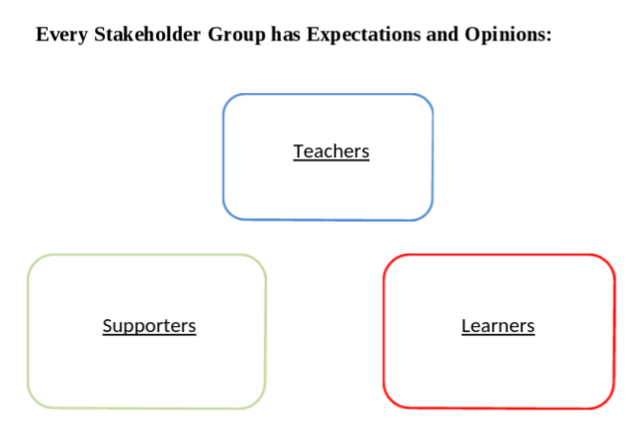
Communication is the No. 1 place leaders lose focus and buy-in. Being clear, consistent and open is a must.
You must keep closed-loop communication so that everyone is informed and feels heard. This doesn’t mean you need to wear your heart on your sleeve or put all of the school’s business on display, just that you take input where it is offered and make decisions that account for it. Every stakeholder group has expectations and opinions, but these shouldn’t exist in a vacuum. Here's how to change that:
Closed-loop communication ensures that each group is talking to the other.
With the new Next Generation Science Standards rolling out, there will be new curriculum and professional development materials that all have to meet up and agree. That necessitates a common language as well as support for teachers in creating that STEM learning environment. It shouldn't be on the teachers to create that from scratch, so supporters and learners must be active participants in the process.
It’s also important that we keep in mind what the new STEM learning environment is. It’s a combination of many factors, including...
- Science and engineering practices
- New, more dynamic content
- The idea that students will be uncovering content and meeting performance expectations
- A new model of instruction in which recalling facts and repeating performances is no longer sufficient
These are crucial pieces of what a STEM environment is, and this is something that parents and even teachers will need help in understanding along the way. One of the most important ways to prevent a showdown is to bring this information to everyone in these stakeholder groups – teachers, students, parents, administrators – to help them understand why these new standards exist. Helping them grasp the importance of engaging students with the content and developing practice skills by which to do so is a very important step in avoiding a showdown.
If you don't do this, you have failed to create effective closed-loop communication. The fallout from this will be that students have one expectation and teachers have another. Administrators, after school programs and parent are all going to have different expectations as well, and that’s when things start moving sideways. It’s important to understand where each type of stakeholder is coming from, then help educate them.
This is another place where the Common Core standards fell short; some public awareness existed, but after the main messaging went out, it was up to everyone on the local level to try and make sense of what they heard from the person immediately above them. This is not a good system.
We want to avoid history repeating itself with the Next Generation Science Standards.
Excellent communication can help do that, as can avoiding inappropriate resources and investing in understanding what these new standards are really asking for. Doing so helps our students become the STEM thinkers and leaders we want them to be – the scientists and engineers of the future – and we can’t ask anything more of a great STEM program. So are the Next Generation Science Standards the next Common Core? In many ways we hope they will be, in that they have the potential to provide a national standard for science instruction.
Used well, moreover, they have the potential to enrich math and ELA Common Core standards, and therefore add to education far beyond simply their contribution to science, engineering and technology.


